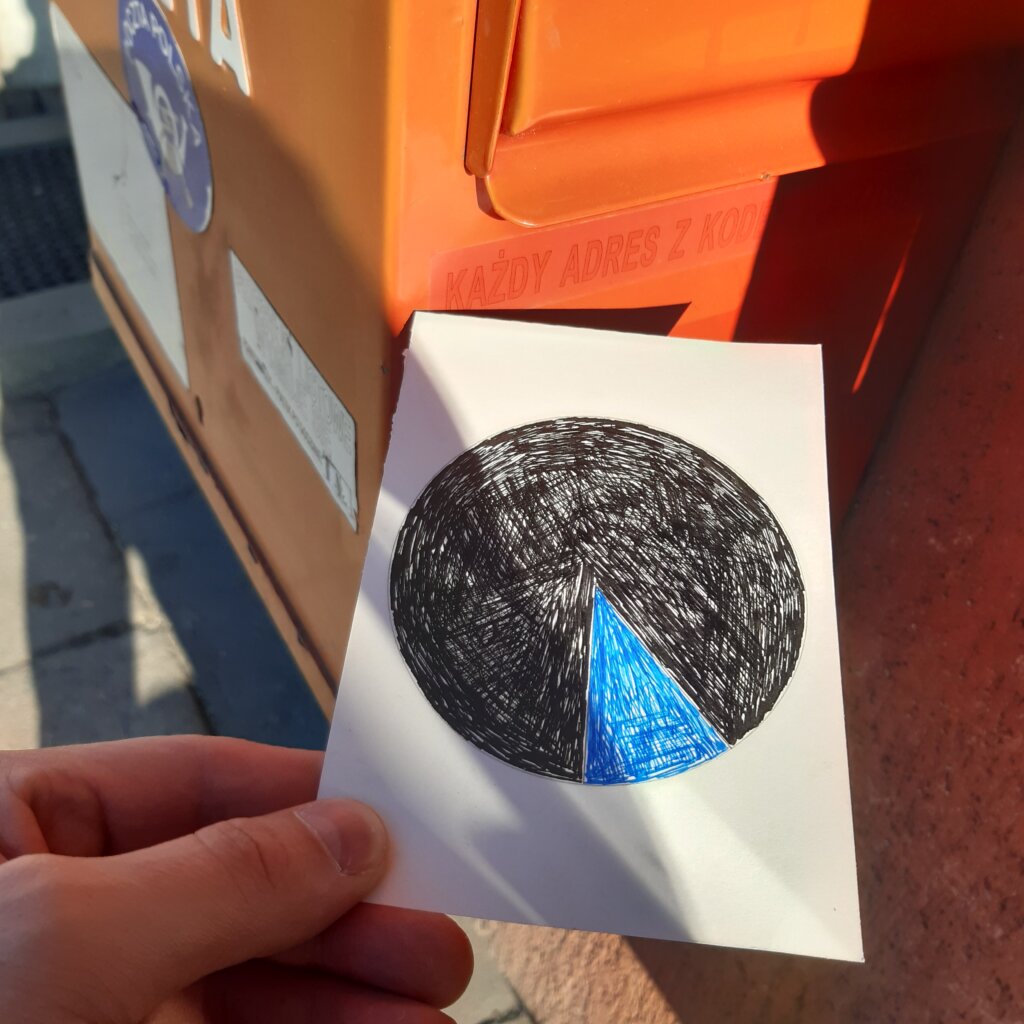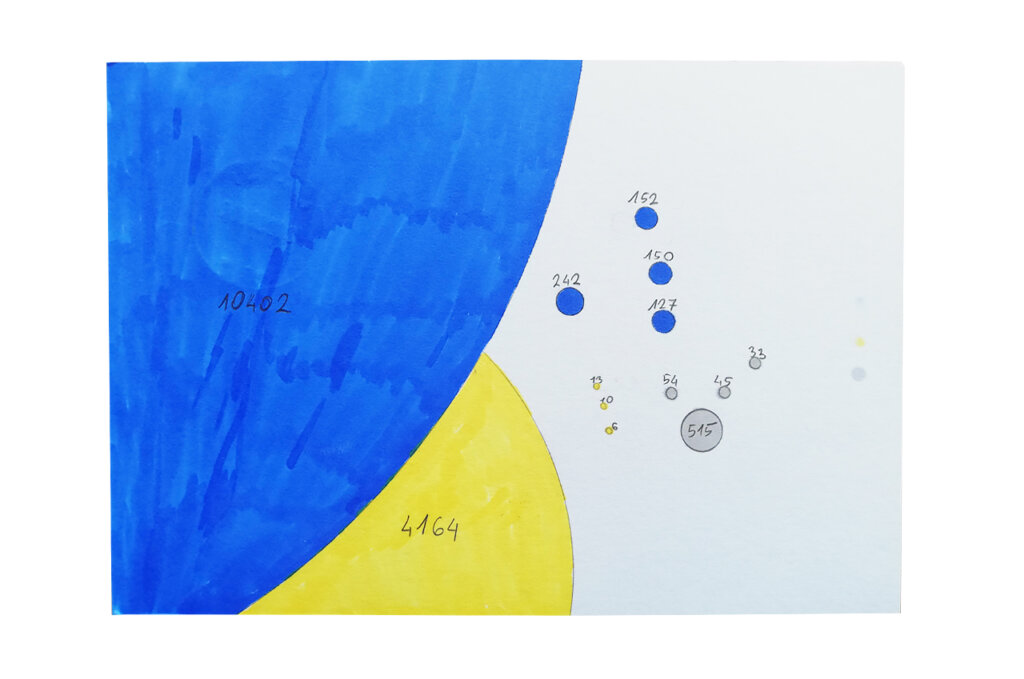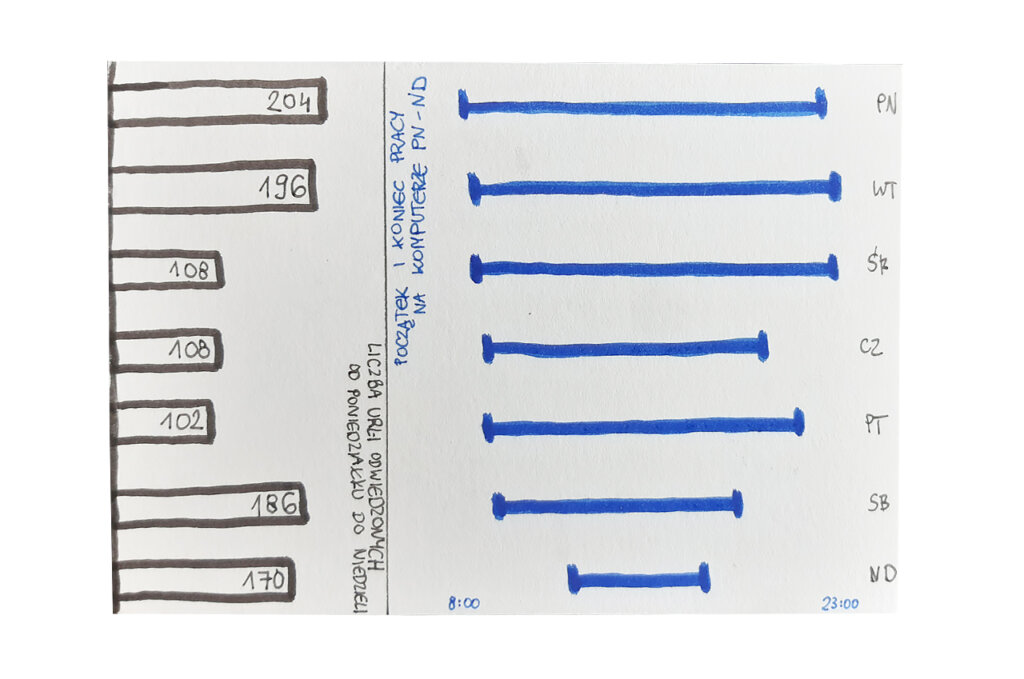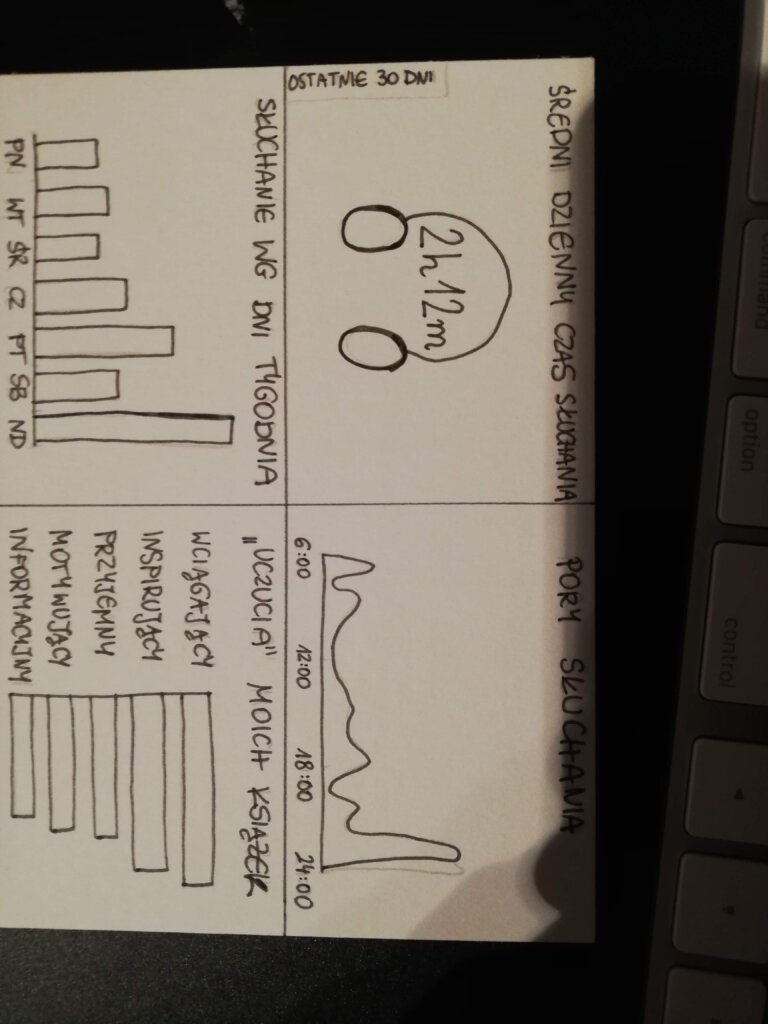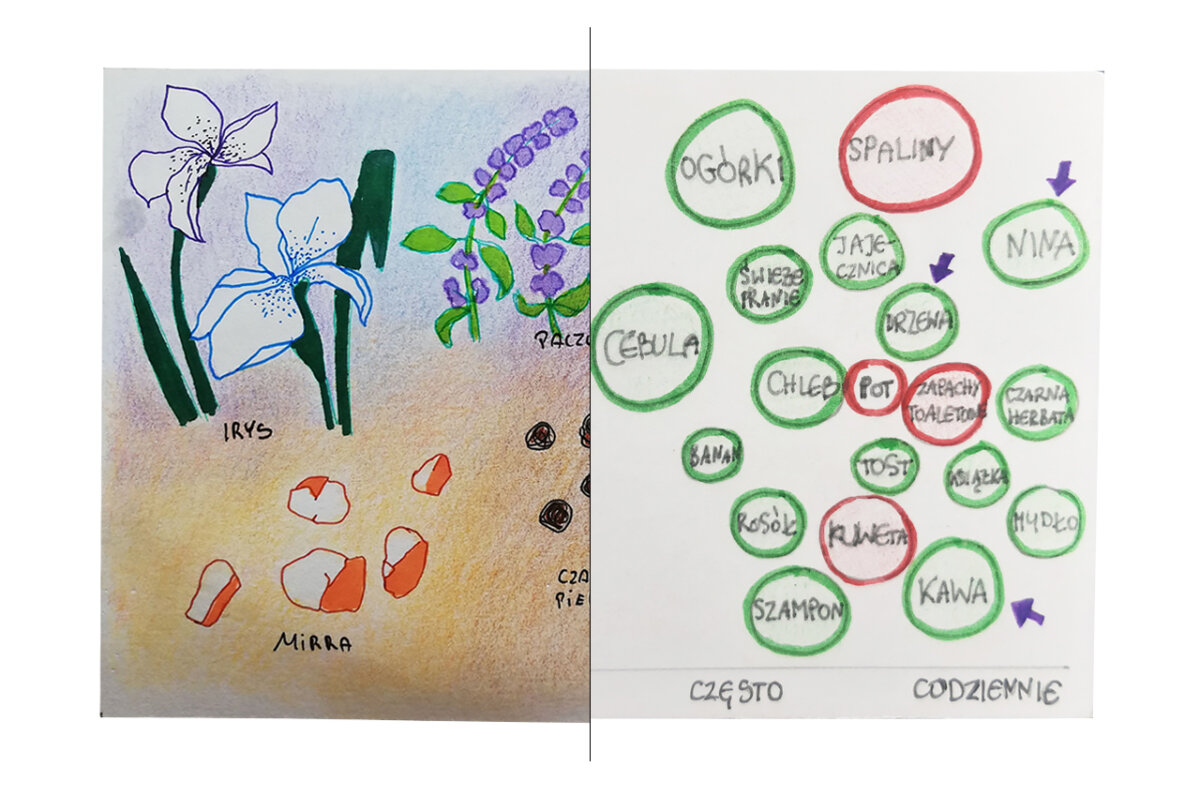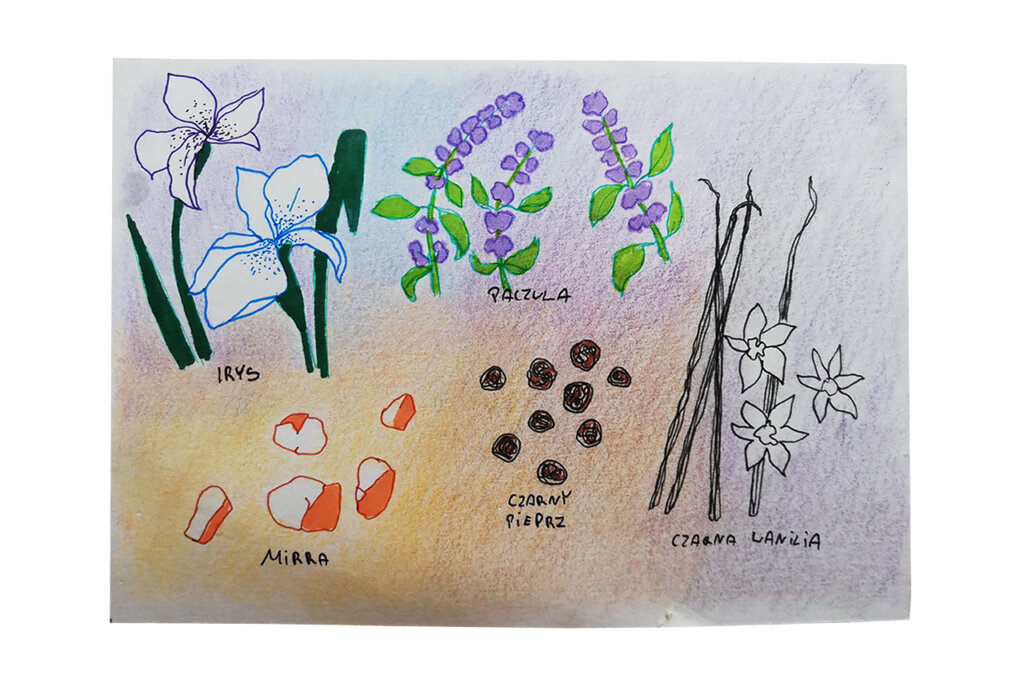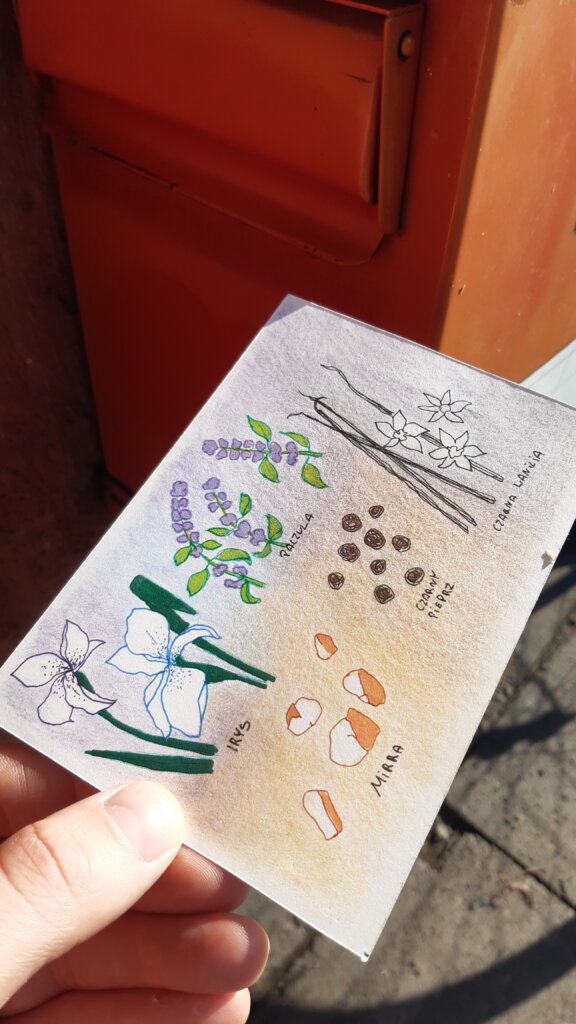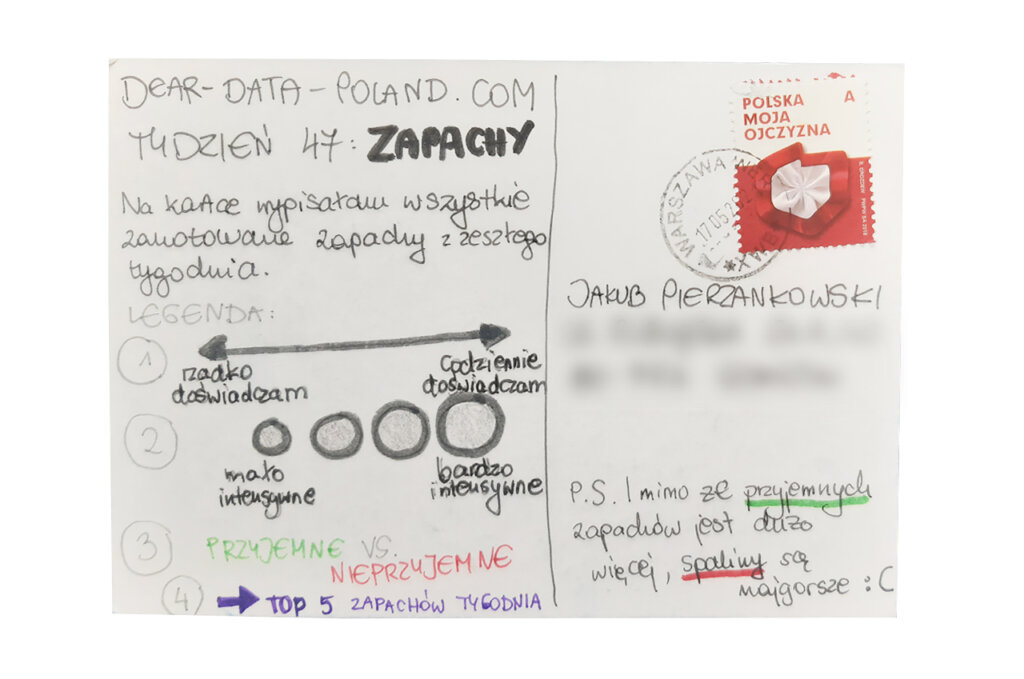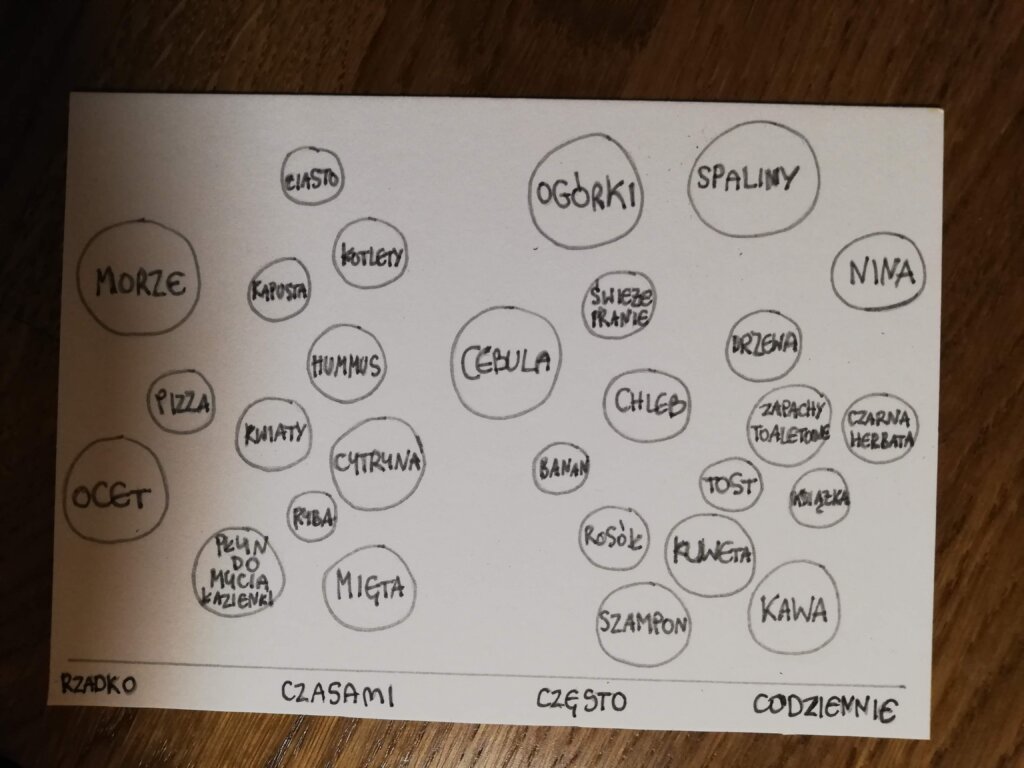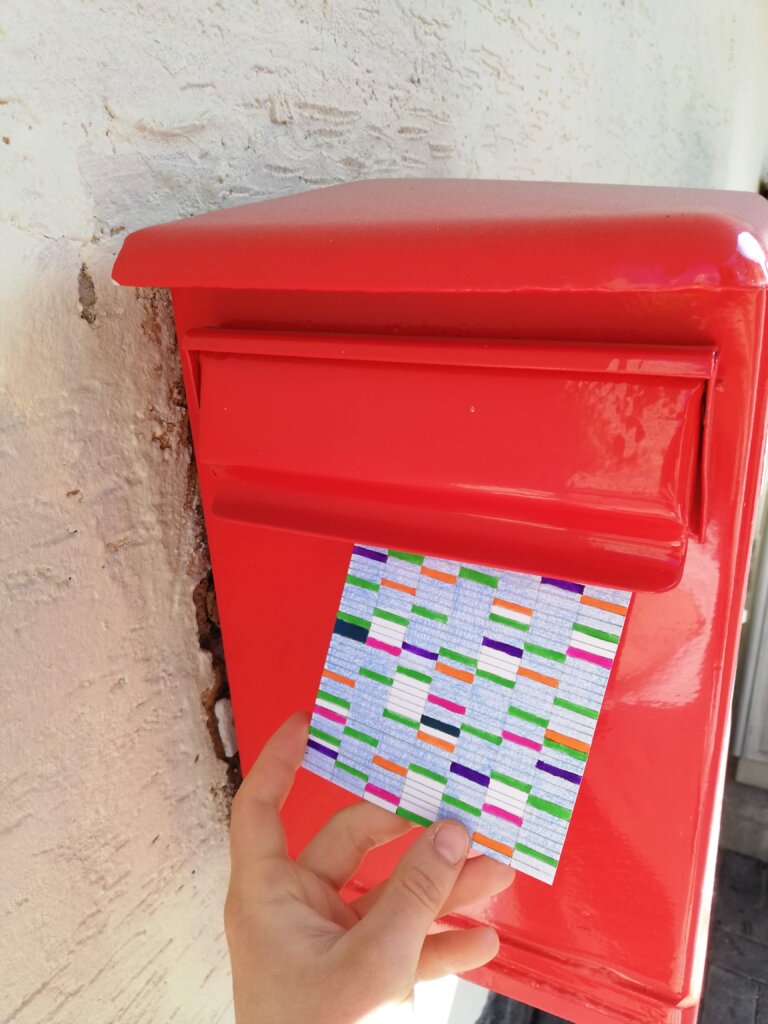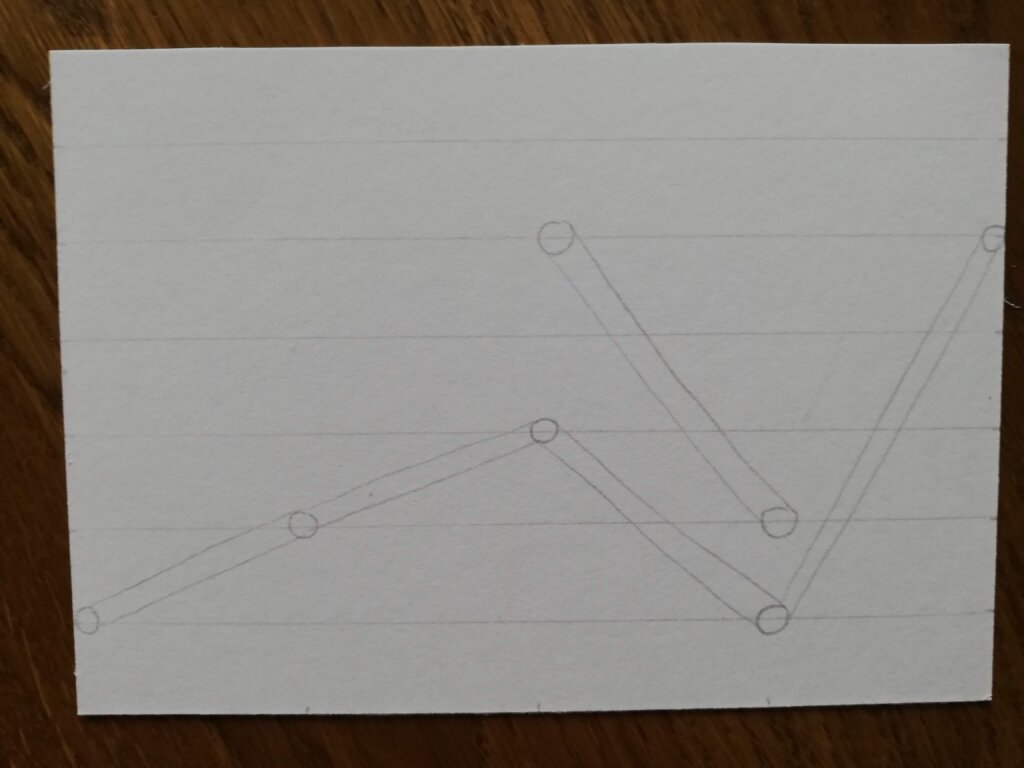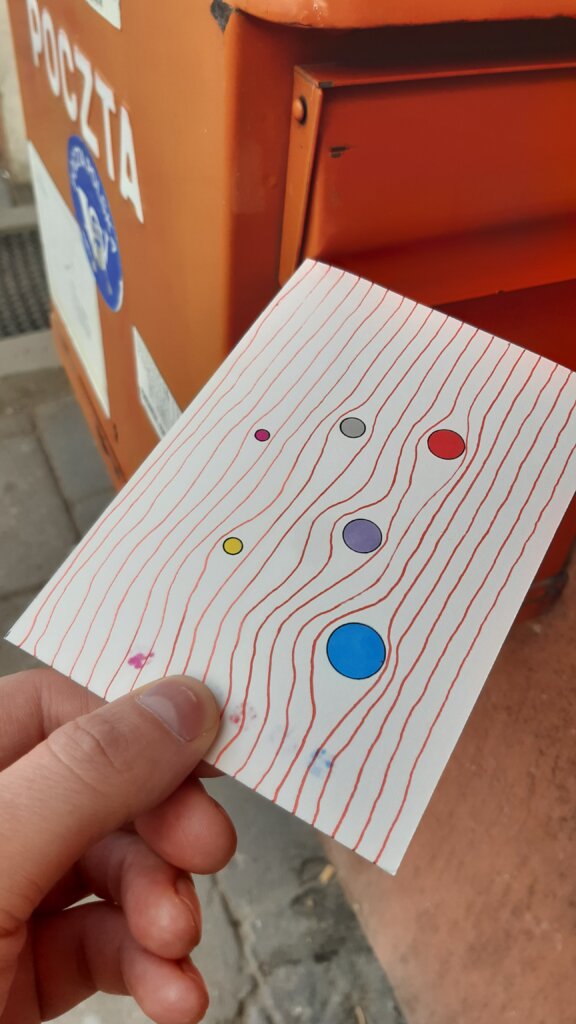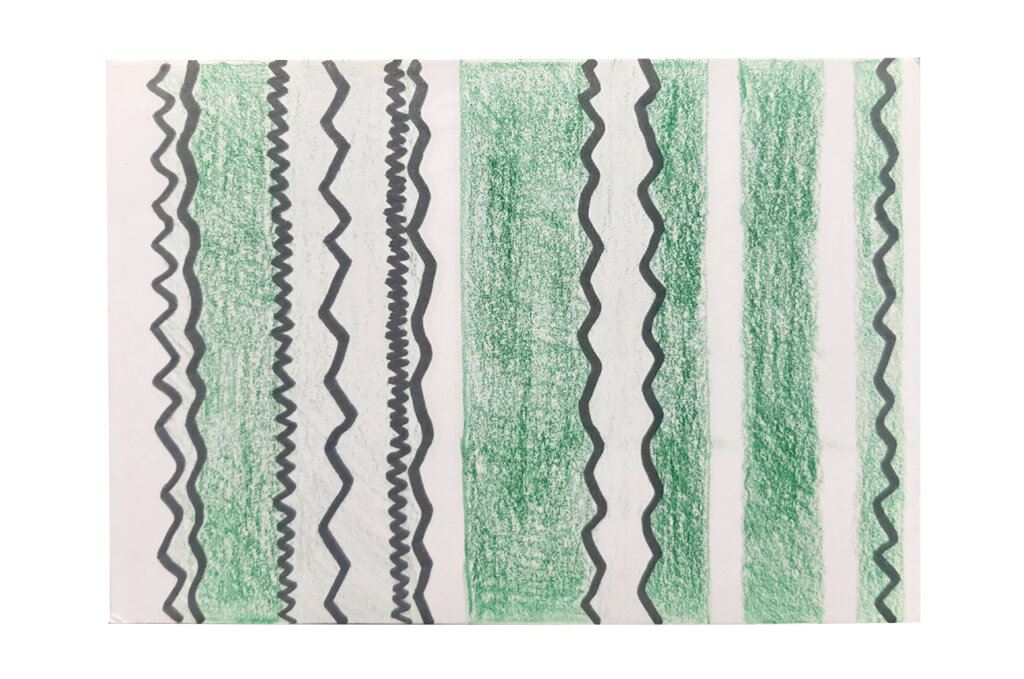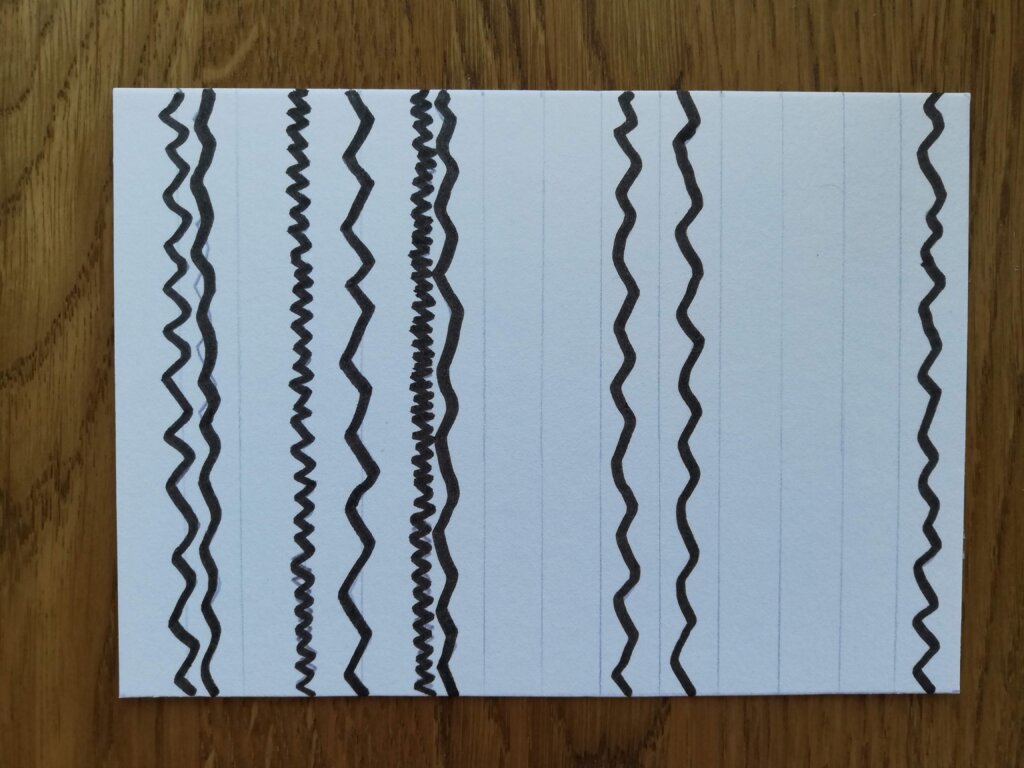

Jakub
Topic:
Goodbyes. The Dear Data Poland project was a very interesting experience for me. It tested my creativity. My mind has been working at a higher speed all year long. Collecting data can be very painful and tiring, as well as searching for visualization ideas. I am not fully satisfied with most of my postcards, but it was worth it for the few favorite pieces.
Thank you very much to Krzysztof for picking up the idea to start the Polish edition of Dear Data and to Klaudia for replacing Krzysztof and saving this project. I hope we will remember the project our whole lives.
Data gathering:
I approached last week’s subject literally. I counted and categorized all goodbyes. They were kisses, hugs, handshakes, words or text.
Data drawing:
My postcard shows the chronology of all goodbyes throughout the week. The larger the symbol, the more tender farewell.
Klaudia’s postcard:
Klaudia approached the topic similarly, but more in-depth. Klaudia, take care, we stay in touch, see you later;)
The process:



Klaudia
Topic:
Oh no, Dear Data is over. Or maybe should I finally relax and enjoy this moment?
On one hand, I don’t want to say goodbye. Dear Data was always an interesting and creative part of the week. On the other hand, I have experienced how hard it is to constantly collect data of some sort and create postcards regularly. There were crises, but the sight of a new colourful postcard in my mailbox compensated for the time and effort involved. I find our gallery truly impressive.
Data gathering:
There were many more goodbyes this week. I wrote them down in my notebook or on my phone. I hope I didn’t miss more than 10% of goodbyes.
Data drawing:
The last postcard deserved more than one chart. Goodbyes have many faces. They are held at different times of the day. Sometimes they are very formal, sometimes affectionate. There were times when I ended up in a bad mood after saying goodbye. And although I spent the whole week in Warsaw, I greeted and said goodbye to people from all over Poland. The postcard shows it all. It’s a mish-mash, but it was supposed to be this way.
Jakub’s postcard:
I knew that Jakub would finish the project with circles 🙂 It couldn’t be otherwise! I like the strong, red emphasis on kissing goodbyes.
Jakub, we made it! See you! Who knows, maybe we will carry out another project together.
The process:












